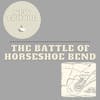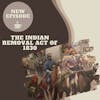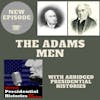The Battle of Horseshoe Bend

This week I am diving into the Battle of Horseshoe Bend.
Facing a continued onslaught of new white settlers and constant betrayal by the United States government, several members of the Creek Tribal Confederacy wanted to take a defiant stance against those invading their territory. However, others were more willing to engage with the white men and women, hoping to balance their culture with their own. The result was a civil war among the nations, exploited in the fight known as Horseshoe Bend.
SOURCES:
Braund, Kathryn. “Summer 1814: The Treaty of Fort Jackson ends the Creek War.” National Park Service. Aug. 15, 2017. Accessed October 4th, 2021. (LINK)
Braund, Kathryn. “Creek War in the Southeast: A Civil War and an Enemy Occupation.” National Park Service. Aug. 15, 2017. Accessed October 4th, 2021. (LINK)
Britannica, T. Editors of Encyclopaedia. "Creek War." Encyclopedia Britannica, May 11, 2018. (LINK)
Davis, Karl. “‘Remember Fort Mims:’ Reinterpreting the Origins of the Creek War.” Journal of the Early Republic 22, no. 4 (2002): 611–36. https://doi.org/10.2307/3124760.
Foreman, Amanda. “The British View the War of 1812 Quite Differently Than Americans Do.” Smithsonian Magazine. July 2014. (LINK)
History.com Editors. “The War of 1812.” History. October 27, 2009. (LINK)
“Menawa.” National Park Service. (LINK)
Support the show (http://www.buymeacoffee.com/civicscoffeepod)
“The sun was going down, and it set on the ruin of the creek nation. Where but a few hours before a thousand brave… had scowled on death and their assailants, there was nothing to be seen but volumes of dense smoke, rising heavily over the corpses of painted warriors, and the burning ruins of their fortifications.” Sam Houston, 1814.
Welcome to Civics & Coffee. My name is Alycia and I am a self-professed history nerd. Each week, I am going to chat about a topic in US History and give you both the highlights and occasionally break down some of the complexities in history; and share stories you may not remember learning in highschool. All in the time it takes to enjoy a cup of coffee.
Intro Music
Hey peeps, welcome back.
As the government bought up territory to expand the country’s borders, adventurous citizens excited about the possibilities of new land continued to flock to the frontier. Of course, there was just one tiny problem: the thousands of indigenous americans who already called the “frontier” their homeland.
As the country expanded and indigenous groups came into contact with more american settlers, a rift started forming between various tribes on just how to treat and deal with the land hungry newcomers. While some wanted to take a conciliatory approach, others demanded the settlers gone. This rift caused a civil war between the tribes and came to a head in a conflict during the War of 1812 known as the Battle of Horseshoe Bend.
So what exactly was this battle? What brought it about? And what were its impacts?
Grab your cup of coffee, peeps. Let’s do this.
Between 1812 and 1815, the United States was in a battle with the British over what came to be coined the second fight for independence and what is taught in the history books as the War of 1812. There have been various reasons given for the start of the war; everything from forced impressment of american sailors to trade disagreements. Whatever the reasons, for a three year period the United States engaged in several entanglements with the British. It was during the War of 1812 that British troops managed to lay siege to the U.S capitol and burn the White House and also provided an opportunity for future president and indigenous american villain, Andrew Jackson to shine.
And as it had been since the beginning of the colonies, both the americans and the british leveraged local tribes in attempts to do their dirty work to gain an upper hand against the other side. So it should be no surprise that throughout the extended period of the war, the British supported various indigenous nations in their acts of rebellion against the encroaching americans. For the British, supplying the angered tribesmen provided an easy way to double the attack on the american military. For the native leaders, it was a last ditch effort in trying to assert their autonomy over their own land.
But not everyone was in agreement on how to respond to the american settlers. Some wanted to take a more conciliatory tone, seeing the potential for trade and working with the white men to adopt some of their practices, while maintaining their tribal autonomy. Others, however, were sick of the broken treaties, constant encroachments on their land, and ongoing violence. They wanted to take a firm stand against those who continued to lay claim to territory that did not belong to them.
This difference in opinion was pronounced amongst the Muscogee people, known by their english given name Creek. Settled along the Tallapoosa River in Alabama, the Creek Nation were not a singular tribe like the Cherokee. Instead, the Creek were made up of nearly of fifty villages who all held their own political systems. Each town, or talwa, had their own representative who would attend the decentralized Creek National Council to discuss larger business such as land disputes and potential treaties with the americans.
Those who advocated for a more peaceful approach tended to live closer to the white settlers and closer connections to the United States representatives who controlled annuity payments established in the Treaty of New York in 1790. Under the terms of the treaty, the United States promised to protect the borders of the Creek Nation and an annuity payment in exchange for ceding a portion of their hunting lands and agreeing to turn over any tribal member who committed crimes against american citizens.
However, as settlers continued to flock to the frontier, Creek borders became more and more blurred. In an effort to protect their land, many Creek warriors defended their territory by chasing off those who were encroaching illegally on their land and the violence continued to escalate. The local Georgian government was disinterested in abiding by the terms of the treaty and so some Creek warriors felt as if they were left with little choice.
Foreseeing the oncoming destruction of land and culture, Shawnee leader Tecumseh made his rounds to the various councils and tribes, trying to convince them to join him in the fight against the perceived invasion of U.S settlers. Tecumseh had connections to the southern tribes through his mother and was the leader of the pan-indian movement, a push to unite the various tribes together and reject the cultural and agricultural practices of the white man.
Believing he had the support of the British in engaging in a counterattack of the american encroachment, Tecumseh implored the various members present to join him and his resistance movement. Most southern tribes refused to engage, preferring to stay out of the fray. But a small number of the creek nation, led by a man known as Red Eagle, was one who wanted to fight; they became known as the red sticks.
The origin of the name red sticks is under some historical debate. Some sources I looked at claimed the name came from the idea that red was used to identify warriors and others claim it was in relation to the war club’s of tecumseh’s party. Whatever the origin story, these warriors would take actions the united states government would use as their justification in slaughtering members of the tribe.
As the differing opinions among the creek became pronounced, tensions continued to escalate. These tensions - and the response of creek leadership in the aftermath of an attack made by several red sticks, lit the kindling in what became the Creek Civil War. In 1813 a number of red sticks killed eight settlers in Tennessee. Hoping to avoid conflict with the united states and remaining in compliance with the Treaty signed in 1790, the council voted to kill those who murdered the settlers.
Publicly whipped and executed, supporters of the red sticks were furious. There were now two sides to the fight: the lower creek, who lived closer to the americans and were more open to trying to maintain a peaceful and productive relationship. Opposing them were the upper creek who lived along a bend in the tallapoosa river that mirrors a horseshoe and where the battle gets its moniker. They had no interest in maintaining a relationship and were now angered at the murder of the red stick members of their talwas.
Trying to take advantage of the situation, Colonel James Caller enlisted 180 men to ambush the upper creek. Hoping to curry favor with the lower creek, Caller and his men attacked in what is known as the Battle of Burnt Corn. Ambushing the red sticks as they were attempting to buy munitions, the militia quickly lost their advantage and suffered a counter attack causing them to flee the area. The battle for all intent and purposes was considered a draw.
However this surprise attack only further enraged the red sticks who, discovering the U.S militia was aided by members of the lower creek, attacked Fort Mims in Alabama, killing two hundred and fifty people, including women and children. While most of the fatalities were limited to members of the creek nation, americans settlers also fell victim to the attack, giving the united states government the excuse it needed to pursue an attack of the tribe.
And so on March 26th, 1814 Andrew Jackson, yes, that Andrew Jackson, then a major general of the Tennessee Militia, gathered just over three thousand men and moved towards the upper creek, camping about six miles from their fortified talwa, known as Tehopeka. The militia consisted of a mix of men ready to fight - roughly 2600 americans and about 600 “friendly indians” including 100 creek. Jackson was surprised to find the village securely fortified with natural elements including logs and mud, making it virtually impossible to penetrate.
Jackson was impressed with the blockade, writing quote “it is impossible to conceive a situation more eligible for defense than the one they had chosen and the skill which they manifested in their breastwork was really astonishing. It extended across the point in such a direction as that a force approaching would be exposed to a double fire, while they lay entirely safe behind it. It would have been impossible to have raked it with cannon to any advantage even if we had had possession of one extremity.” end quote.
Under the direction of creek war chief Menawa, members of the upper creek had moved quickly to shore up their defense. Protected by water on one side and a natural blockade on the other, the upper creek were sitting pretty safe. Menawa, born around 1765, was one of the wealthiest members of the upper creek, operating a trading store, and was respected for his horse raids and military assaults in the past. However even Menawa couldn’t protect the talwa.
Jackson decided to launch a dual attack, dividing his force in half. He sent 1300 militia men, under the command of General John Coffee, down river from Tehopeka where they were to advance from the rear. Jackson began his assault of the fortification, slamming the blockade with cannon fire, knowing full well it would do little, if any, damage. Meanwhile, his divided force of men moved in, crossing the river and stealing the tribe's canoes.
As the upper creek responded, defending their position from the frontal attack, Jackson commanded his troops forward in a bayonet charge and forcing hand to hand combat. Climbing the fortification proved challenging, but slowly the militia scaled the walls and engaged with the upper creek. By this time, the secondary unit had managed to surround the back of the talwa, giving a strong advantage to Jackson.
No mercy was given. Jackson and his troops laid siege to the village, killing as many upper creek as they could, including women and children. Two hundred red stick warriors were slaughtered as they were trying to swim away. The upper creek lost eight hundred of their one thousand strong fighting force. Their chief Menawa was injured seven times, but somehow managed to survive, escaping via a found canoe where he used to float down river.
The result was devastating; not just to the members of the upper creek, but also to the lower creek, some of whom fought along Jackson’s militia. Depleted of their fighting force and unable to gather reinforcements, the creek were forced to cede their territory. Signed on August 9th, 1814, Major General Andrew Jackson, acting in defiance of the directions from Washington, DC, forced the upper creek to relinquish over twenty million acres of land - which equates to roughly half the state of Alabama - in the Treaty of Fort Jackson.
The loss also spelled the end for the creek civil war. Without warriors, and perhaps as a result of both being burned by the united state government, the creek ended their infighting. Some red sticks who managed to survive the conflict took refuge in Florida. Menawa, who managed to survive, went on to lead a group in 1825 in the execution of William McIntosh, a man accused of illegally surrendering creek territory.
The Battle of Horseshoe Bend - and the forced treaty that followed would be a sign of what was to come to the indigenous americans at the hands of Jackson. He would lead the charge against native peoples again during the Seminole War, but we’ll get into that in a future episode. And of course, Jackson would go on to become president and continue his forced removal of various tribes culminating in the implementation of the removal of nearly sixty thousand indigenous americans in what is known as the trail of tears.
While this battle is just a small part of the overall conflict that is known as the War of 1812, I wanted to highlight it specifically for what it meant for the indigenous americans who lost their land and the later implications for those involved, including Andrew Jackson. If you are looking for a deeper dive into the War of 1812, go check out Ian at Why Whiskey. He did a good episode focused on the conflict. I also was on his show a few weeks back where we talked about Clara Lemlich and the garment strike of 1909. If you want to learn about a bad ass woman from history, head over to his show and give it a listen.
Before I sign off today, I wanted to give a quick thanks to recent supporters of the show via buy me a coffee, Emma and the fabulous ladies from Hashtag History, Rachel & Leah. Your support means the world to me. I suggest following Emma on Instagram where she shares information about fabulous women throughout history. And of course, if you love history podcasts, Rachel and Leah do a wonderful job on Hashtag History.
Thanks again, peeps. You are awesome.
Thanks for tuning and I hope you enjoyed this episode of Civics & Coffee. If you want to hear more small snippets from american history, be sure to subscribe wherever you get your podcasts. Thanks for listening and I look forward to our next cup of coffee together.
OUTRO MUSIC
Listener Favorites
Not sure where to begin? Take a listen to some fan favorites.

























